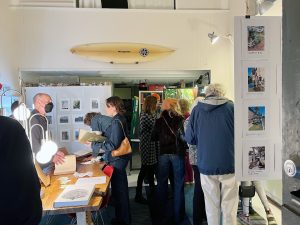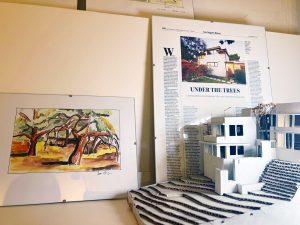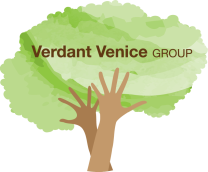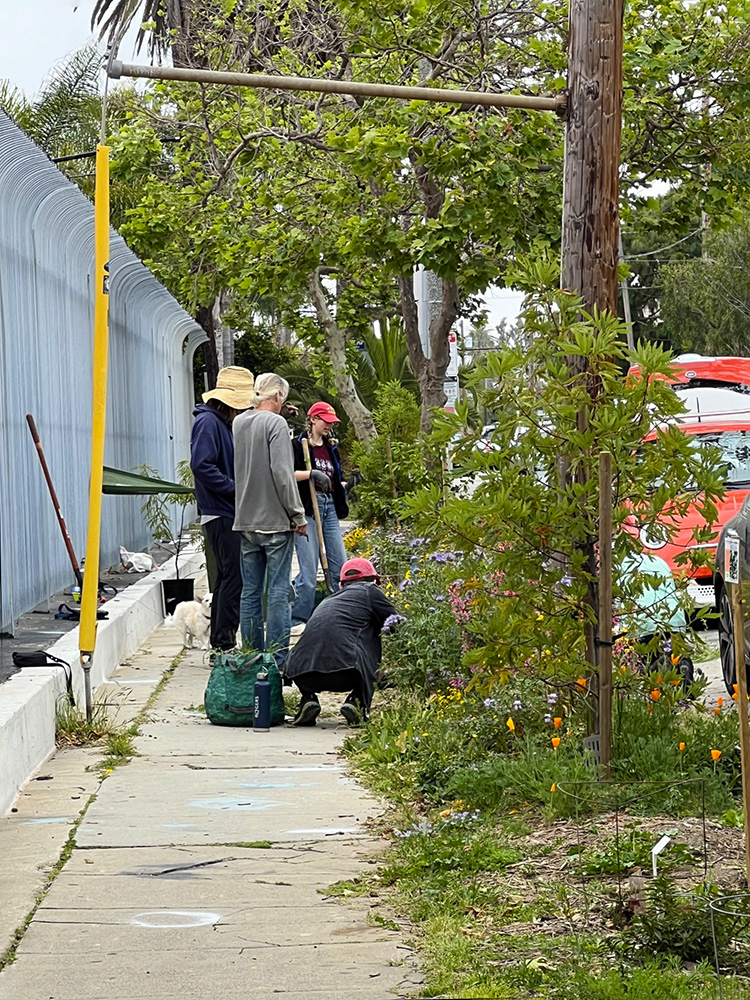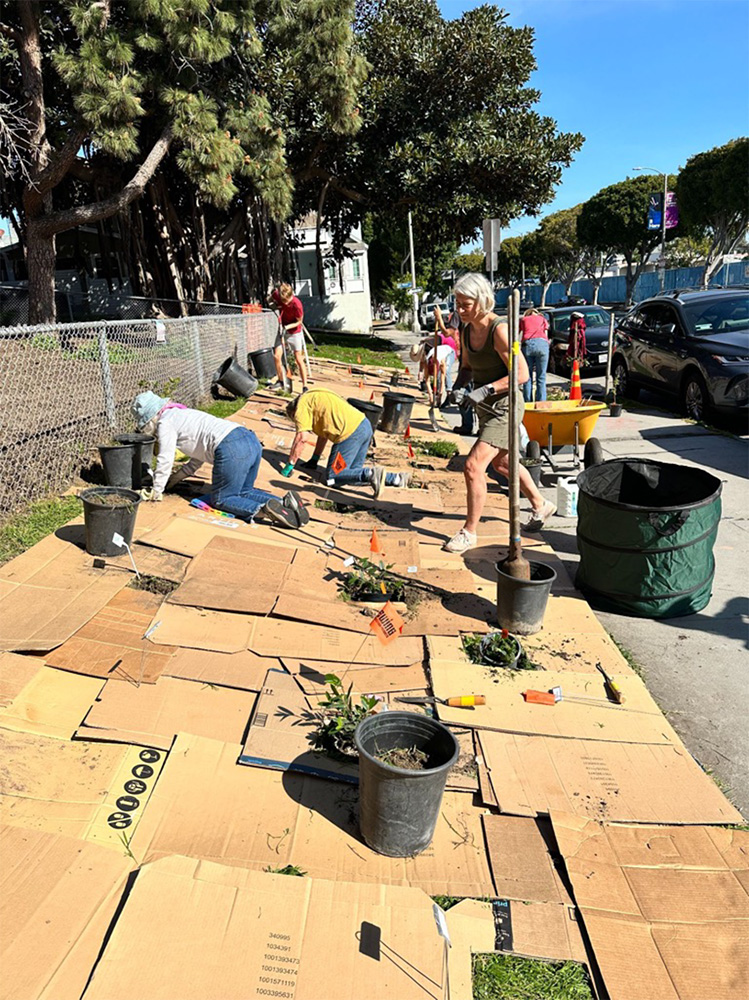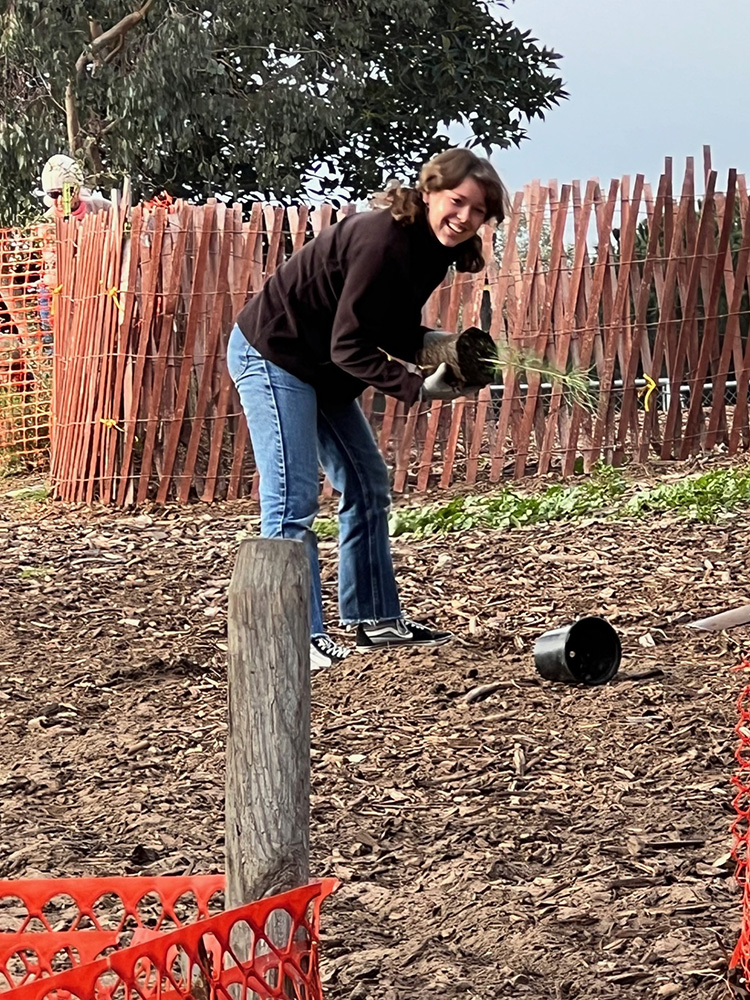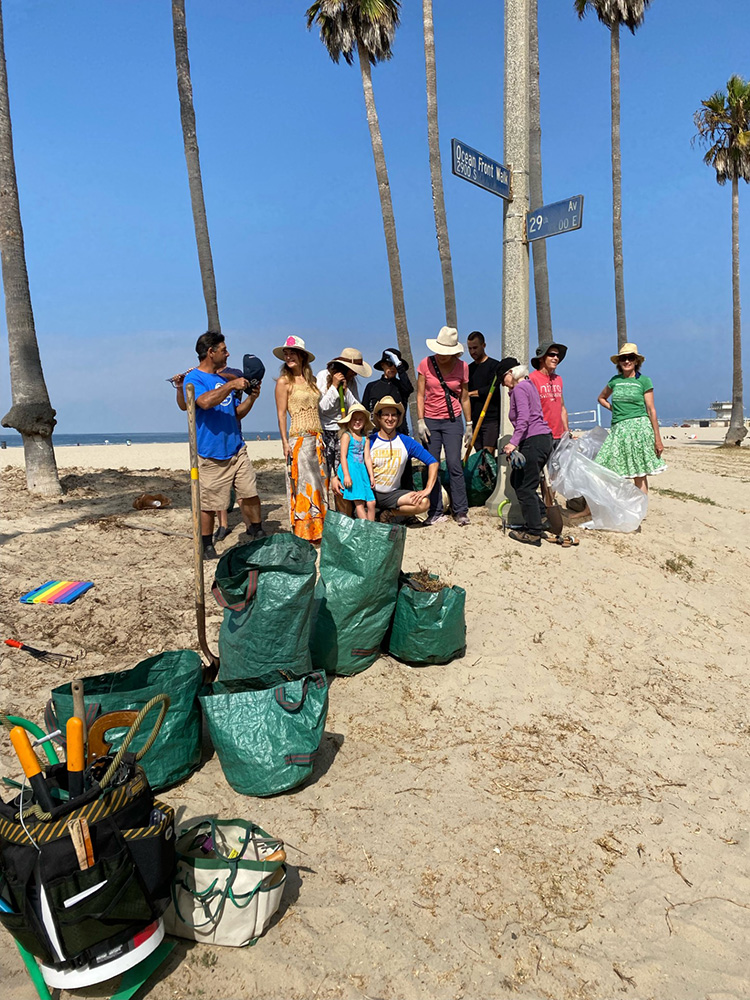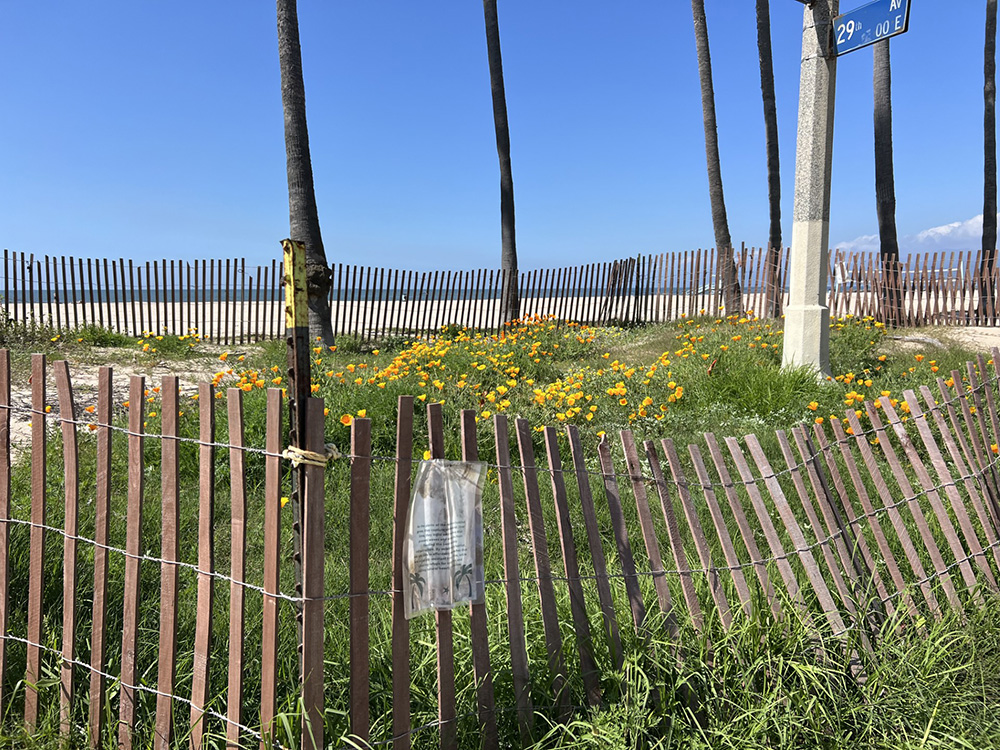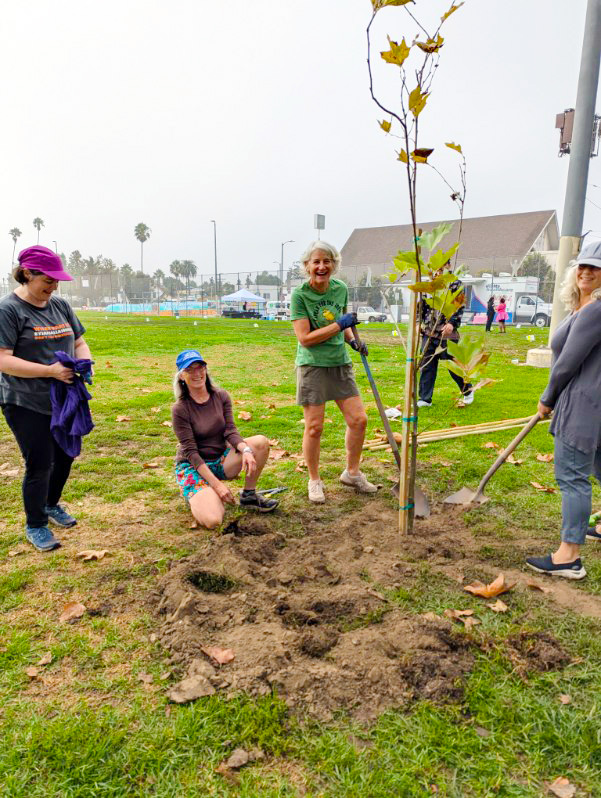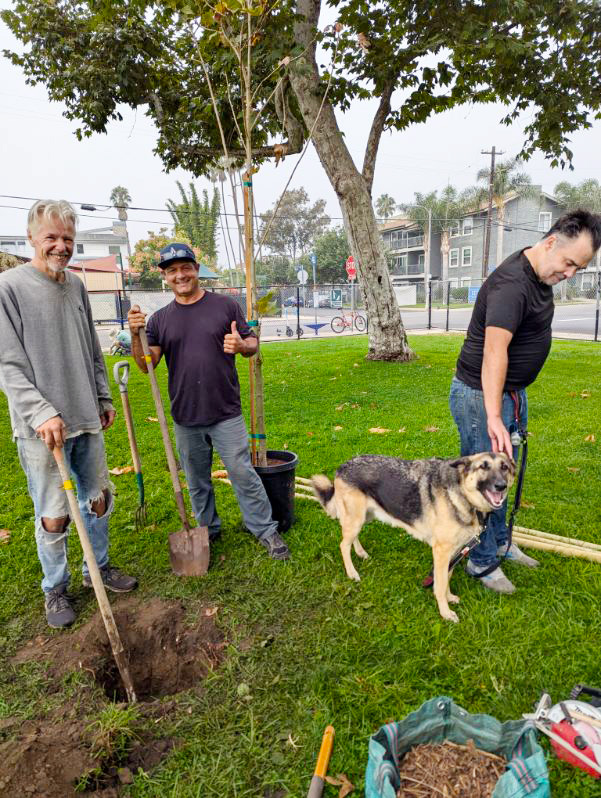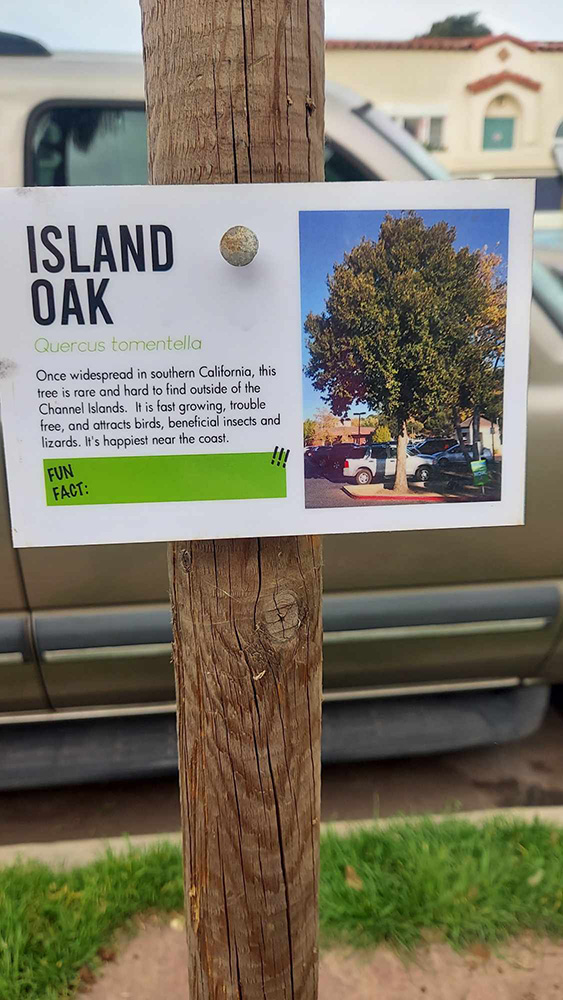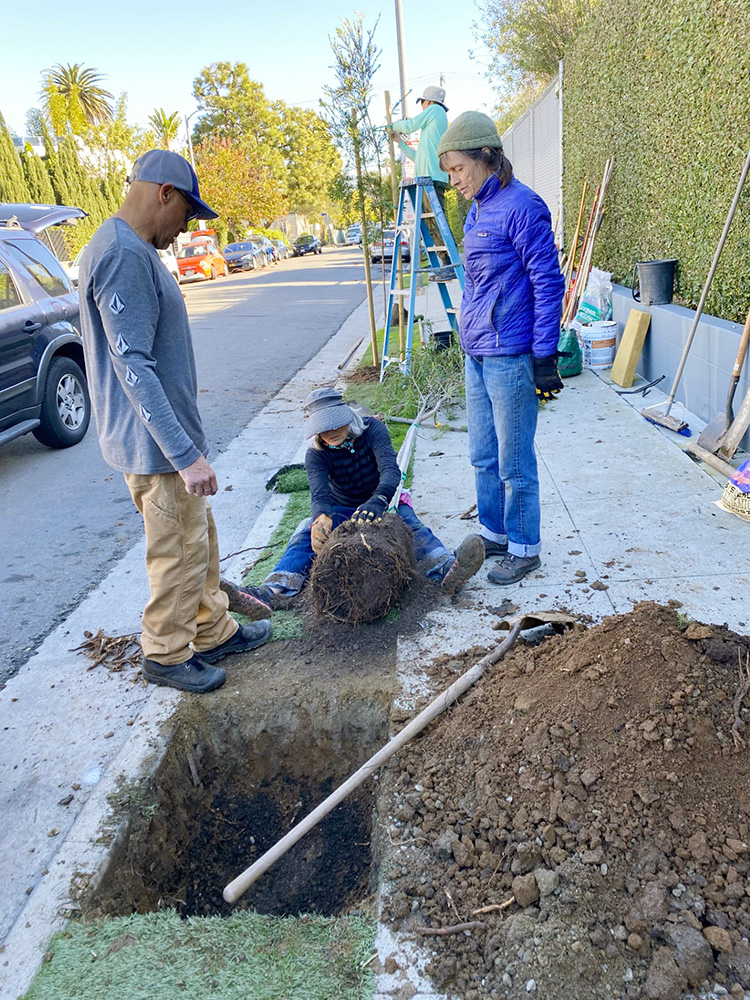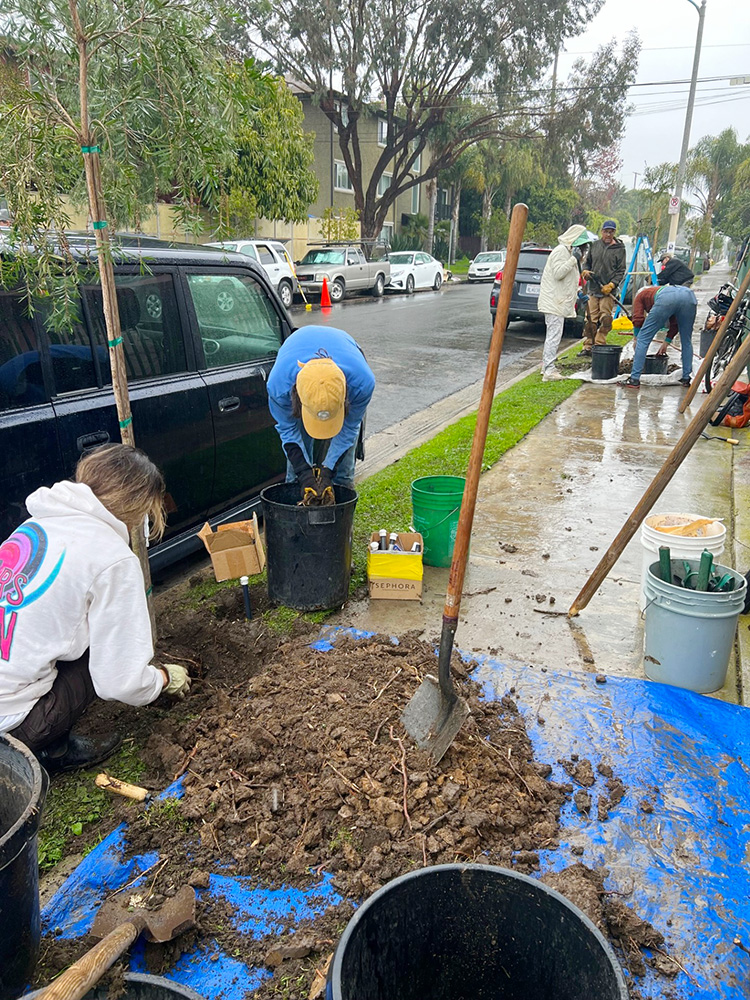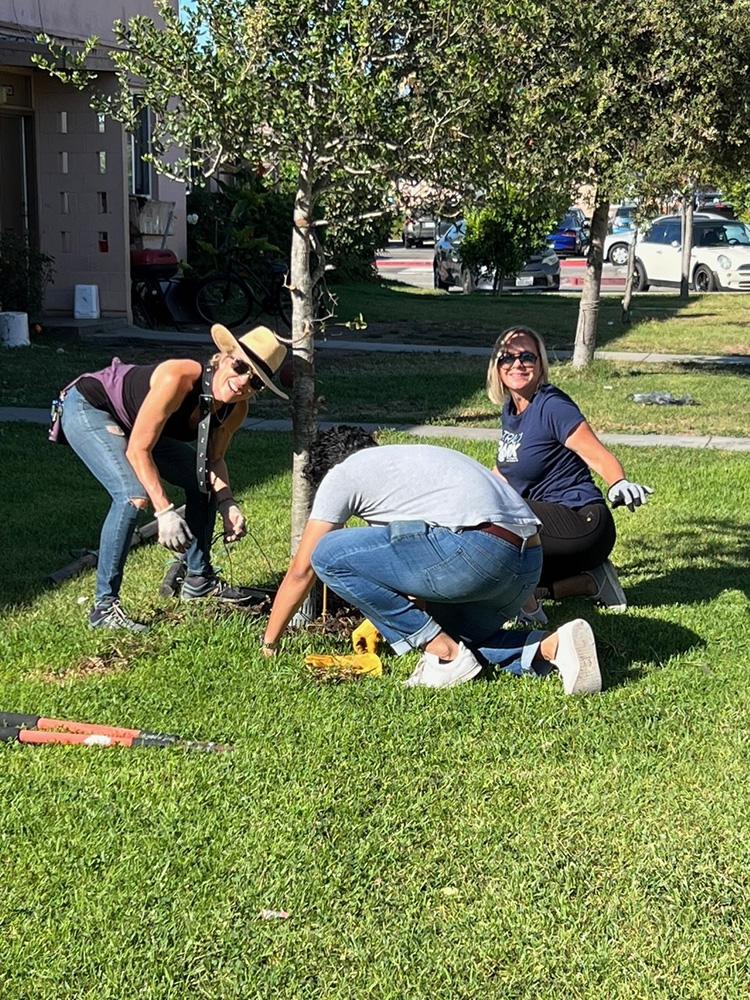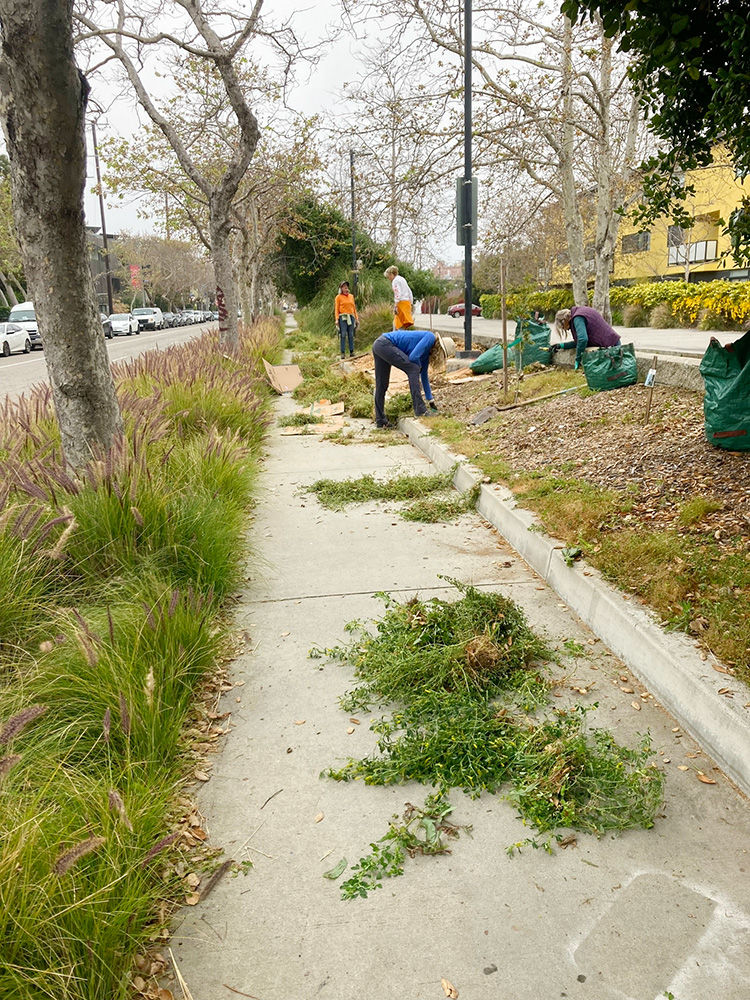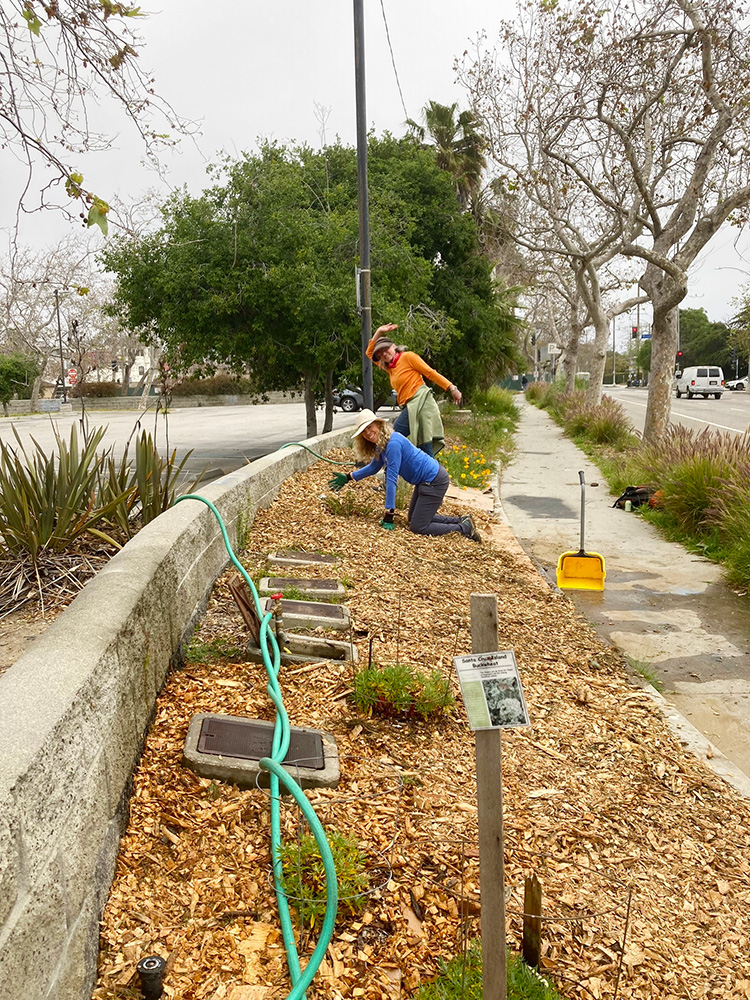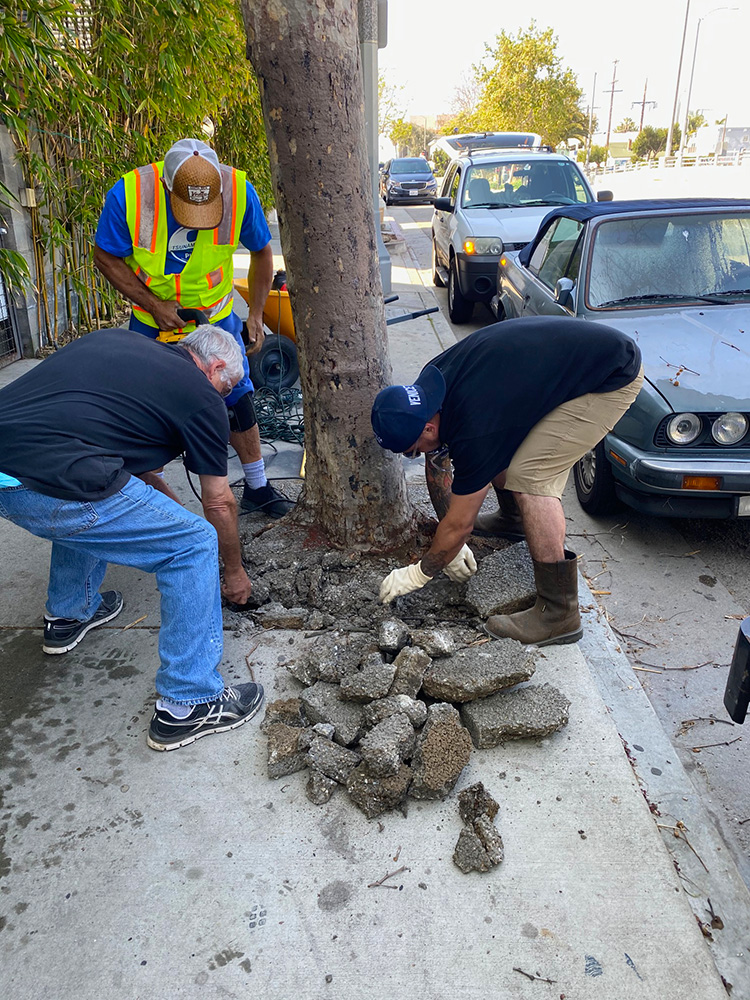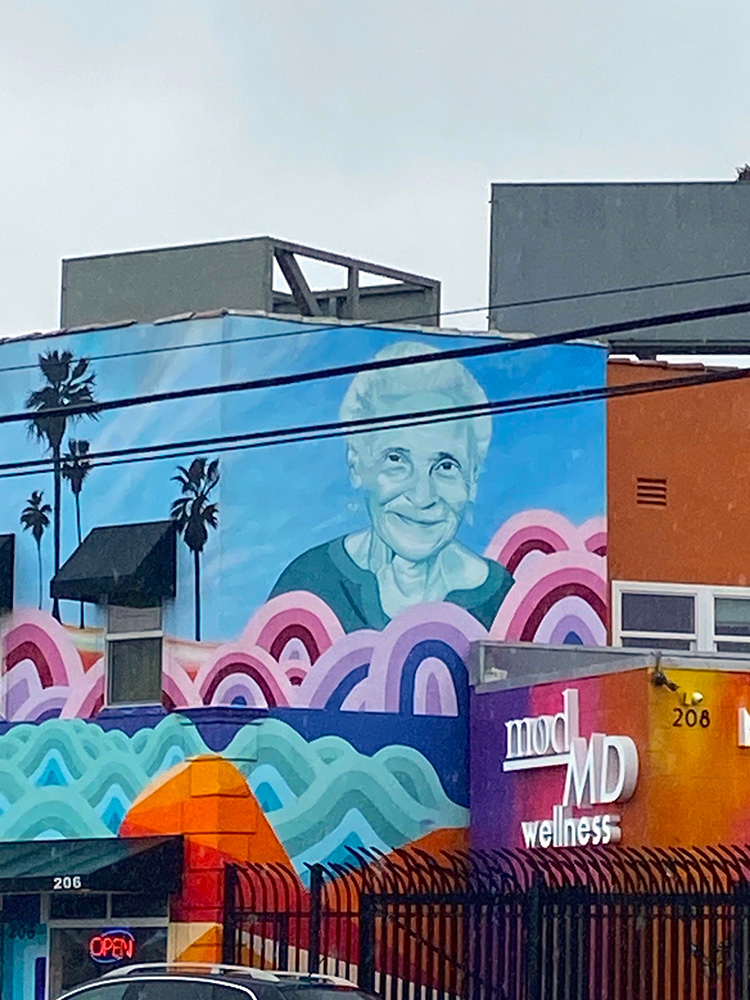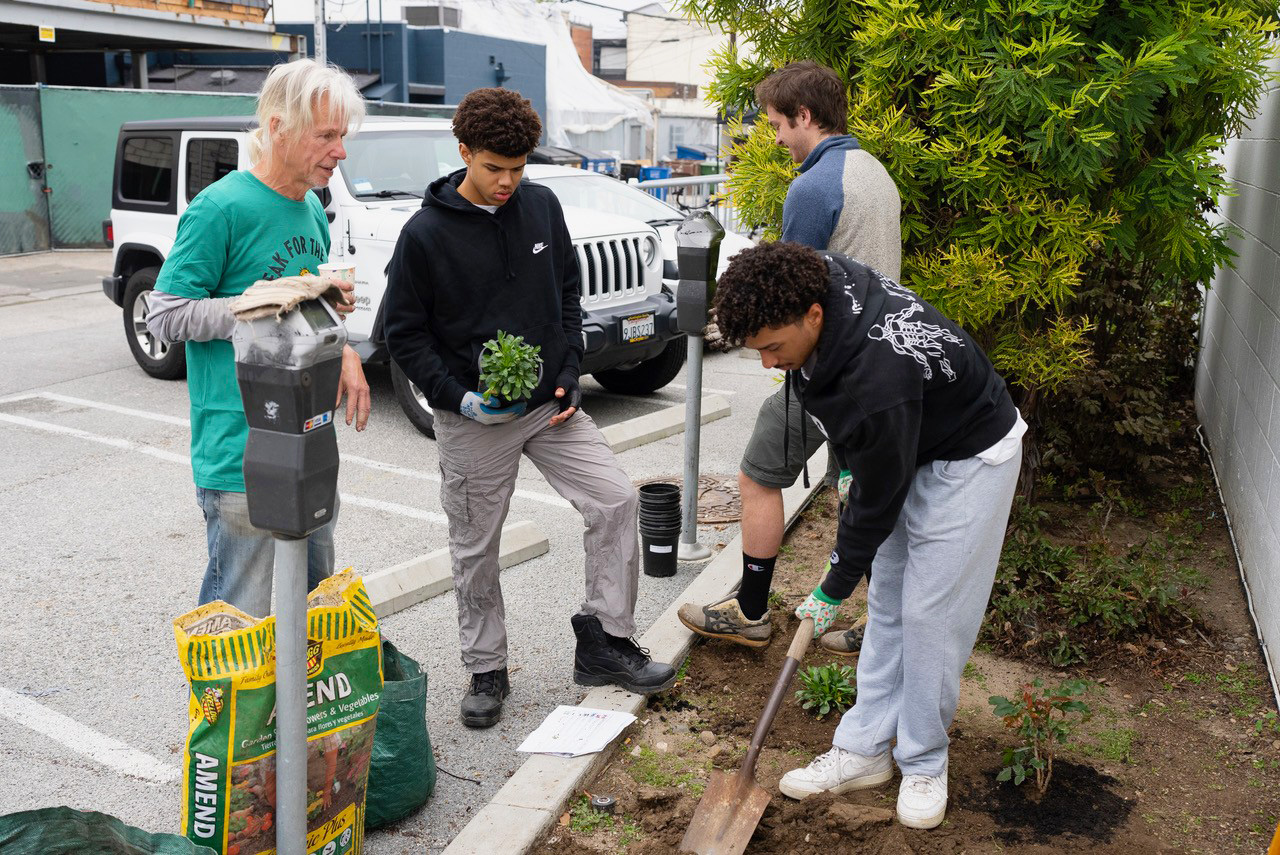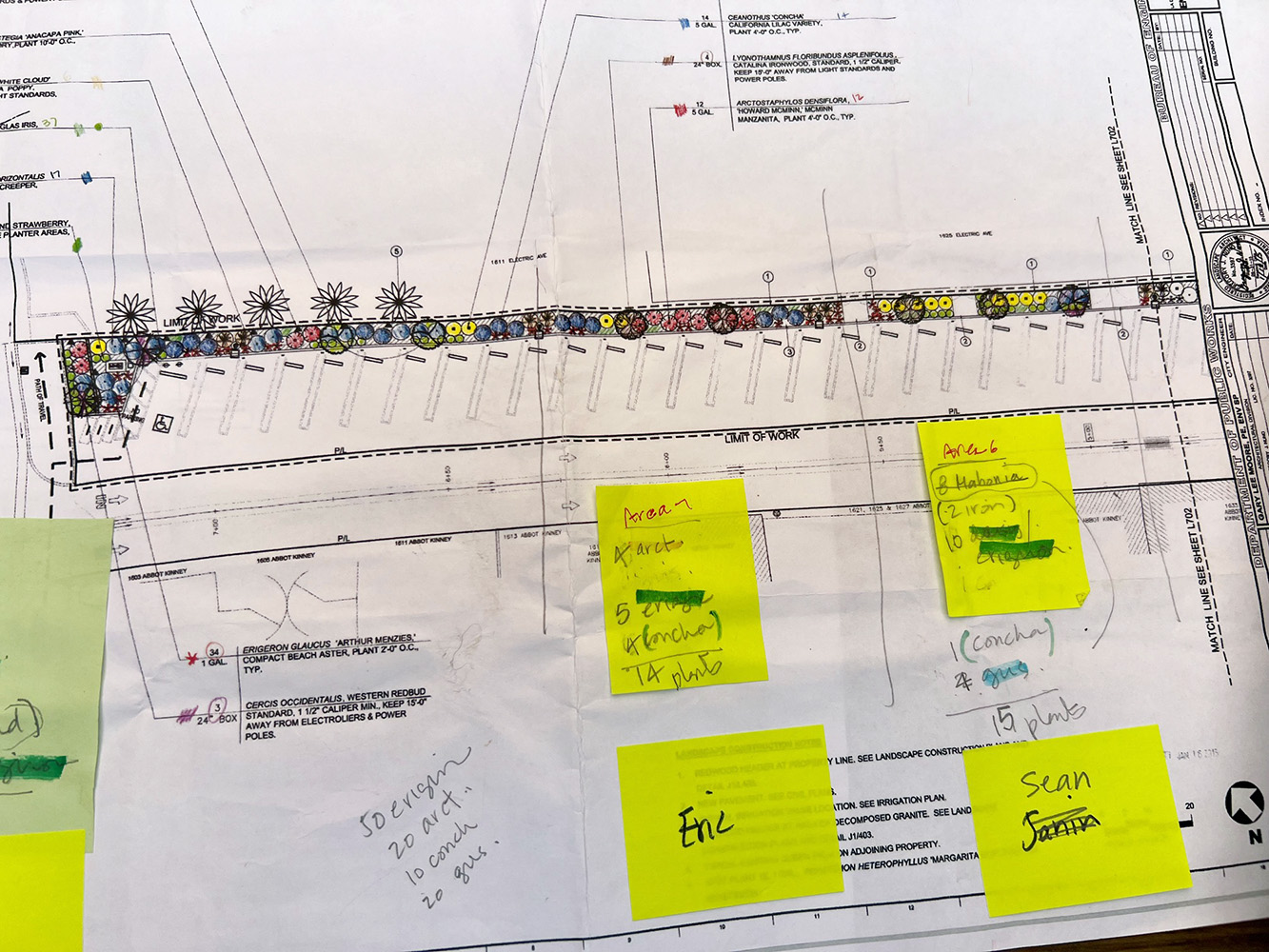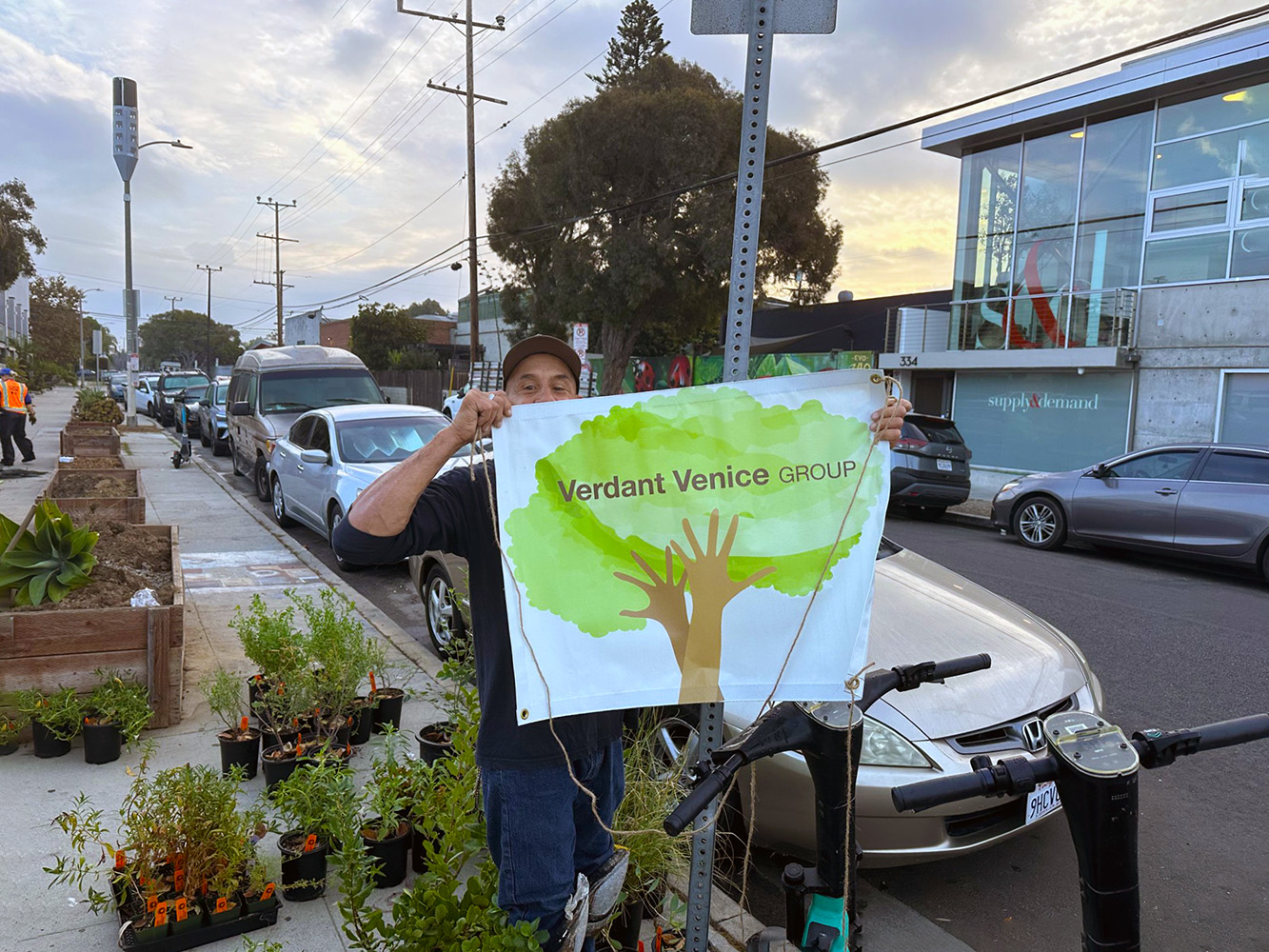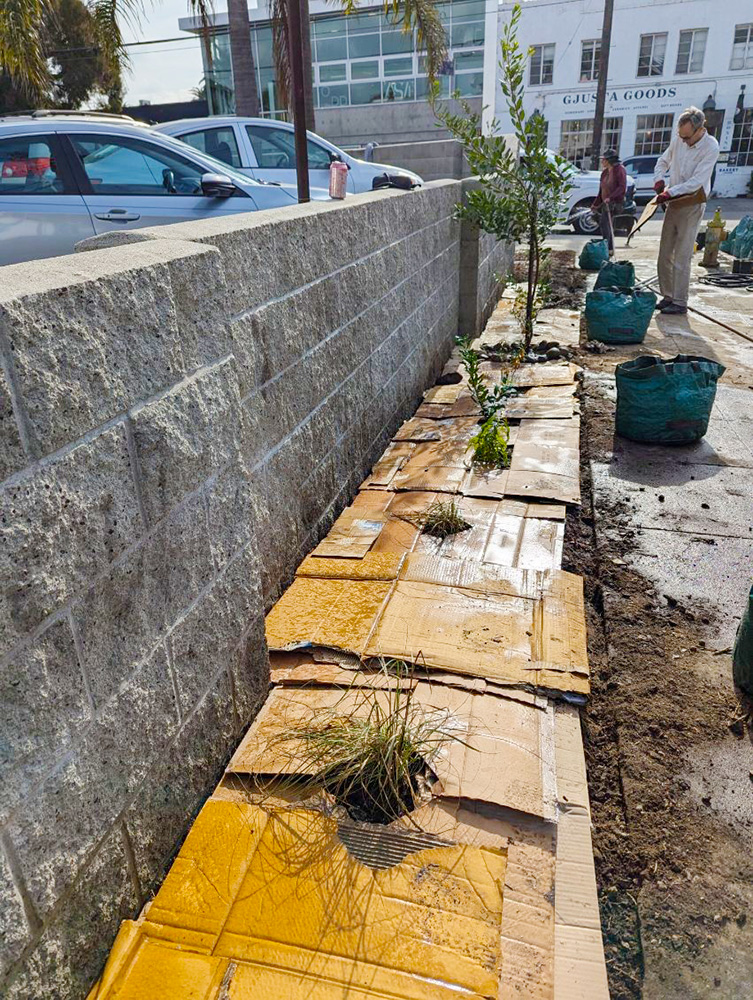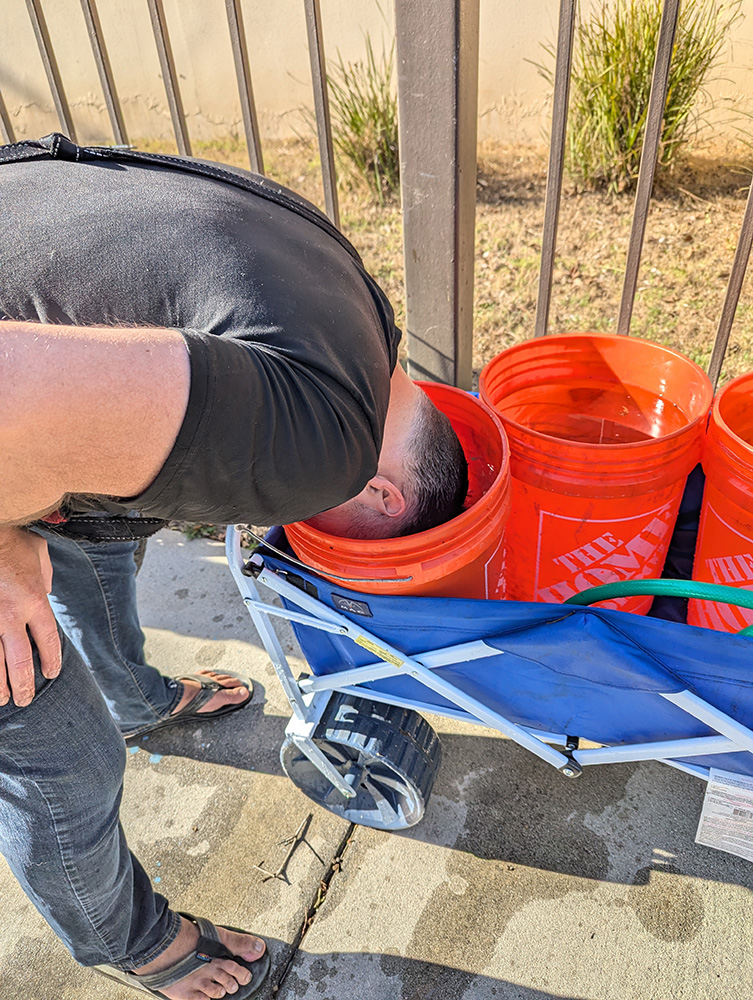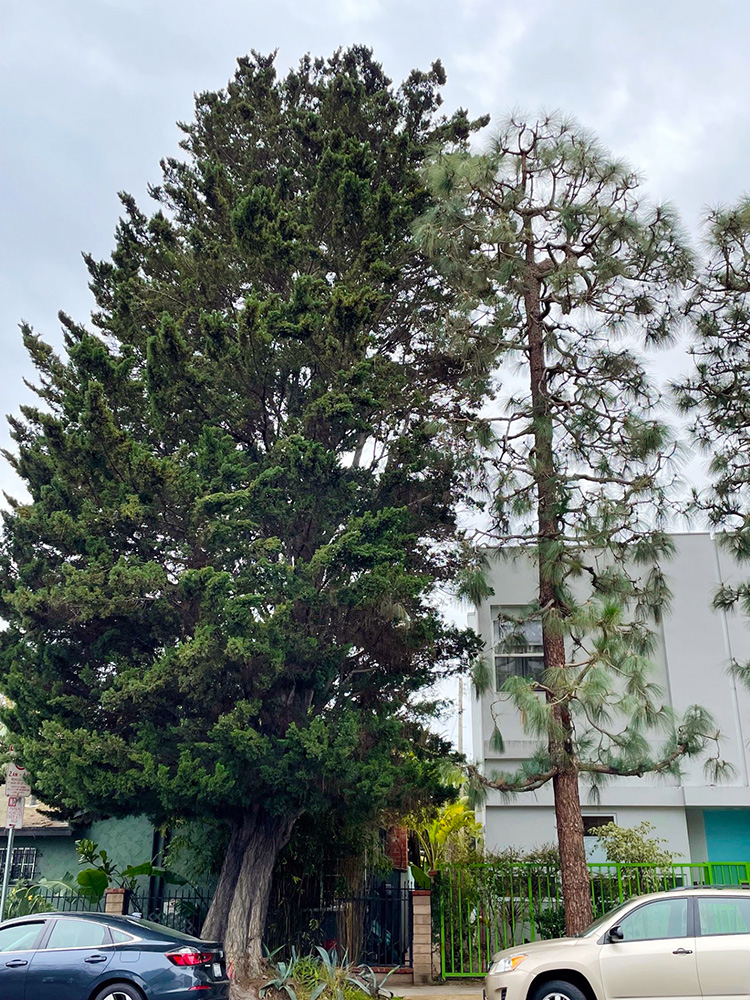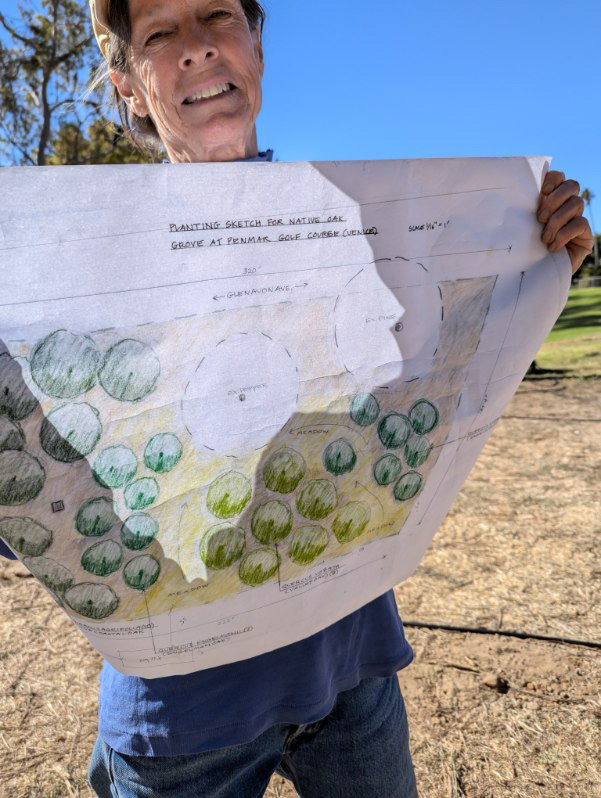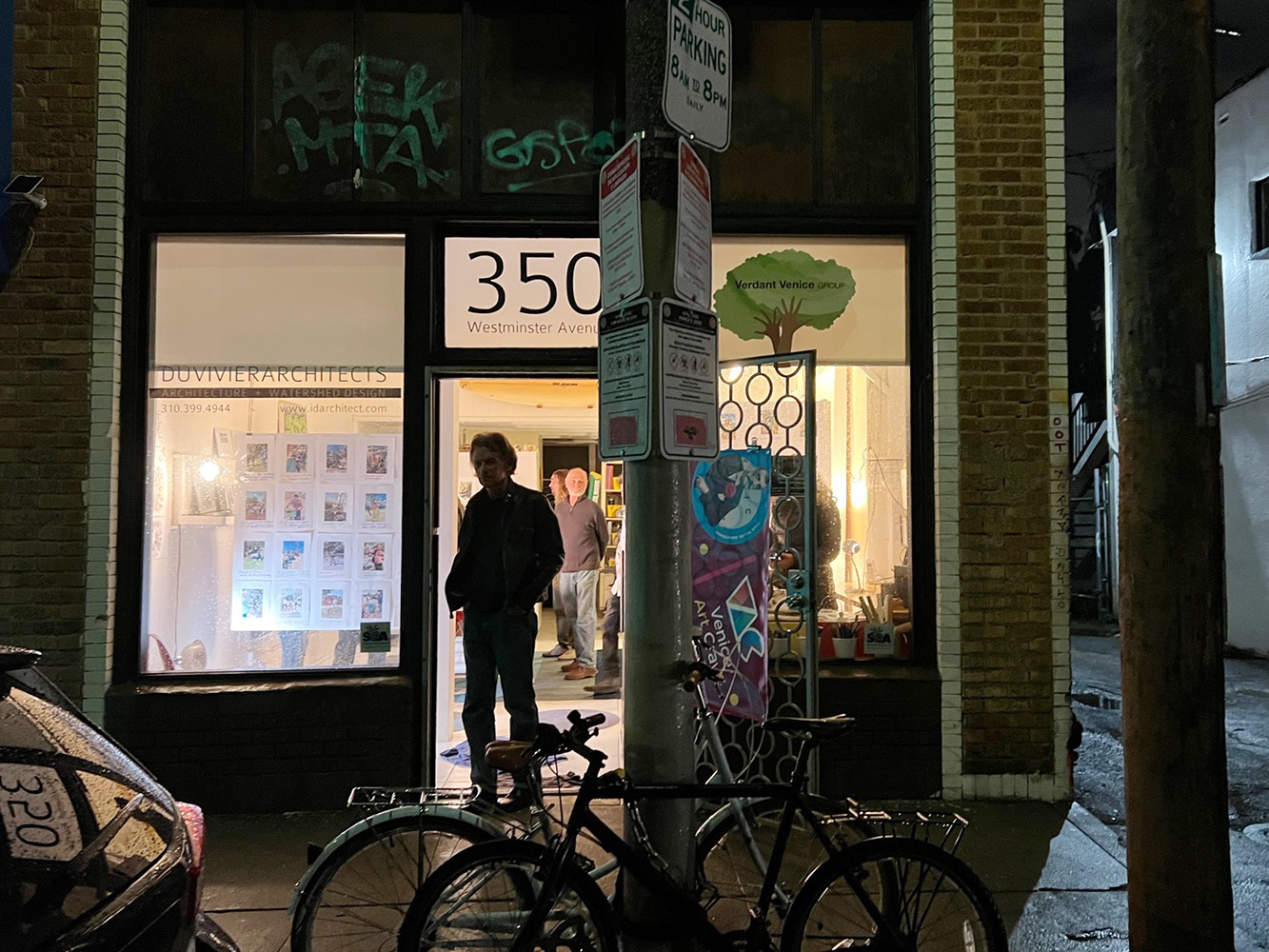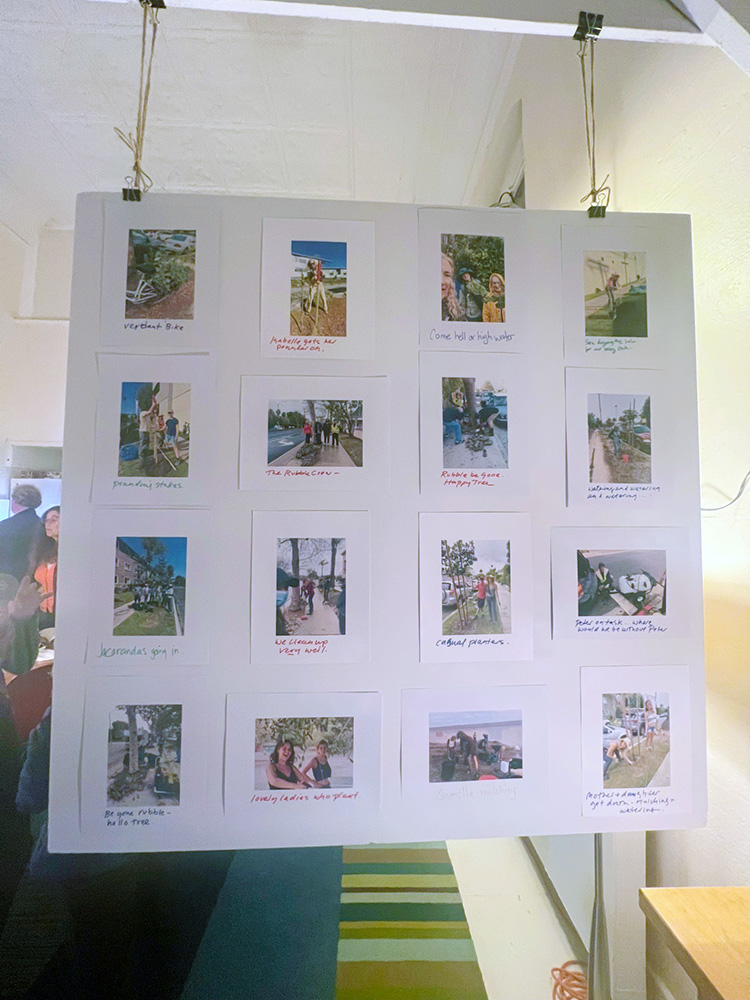In addition to our core mission of adding parkway trees one block at a time, Verdant Venice Group takes on a variety of special projects.
Below is a sample of some of our ongoing efforts.
Venice Skills Center
Located in the Oakwood section of Venice at 611 5th Avenue, the facility seeks to create “a community of inclusion, equity, and accessibility for all,” offering training in a variety of job skills to the diverse local population it serves. Encompassing an entire city block, with no trees or landscaping to combat the heat island effect created by a sea of concrete, VVG has worked diligently over the past 3 years to surround the site with native trees including Velvet ash, California walnut, Engelmann and Coast live oak, Catalina ironwood, and Catalina cherry.

















Westminster Dog Park
Located at 1234 Pacific Avenue, working in concert with the department of Recreation and Parks, VVG has planted and continuously maintained a total of over 30 trees to this sprawling dog park, including native oaks, pines, walnuts, elderberry, toyon and buckeye. In addition, on the southern perimeter of the park along Main Street, we continue to nurture our robust microforest which features a combination of native trees and shrubs including lemonade berry, sages, coffeeberry, fuscia, and buckwheat.











Gold’s Gym Native Tree Garden
Located on Sunset Avenue between Main Street and 3rd Avenue and adjacent to the world-famous Gold’s Gym Venice, VVG has planted and maintains a dozen native Coastal Live Oaks. In addition, the group has installed a flourishing native microforest and butterfly garden between Hampton and Main street, which includes Toyon, arbutilon, datura and goldenrod. Future plans include de-paving of a portion of the parkway on the west side of Sunset between Main and Hampton to create a mirror microforest and tree canopy.
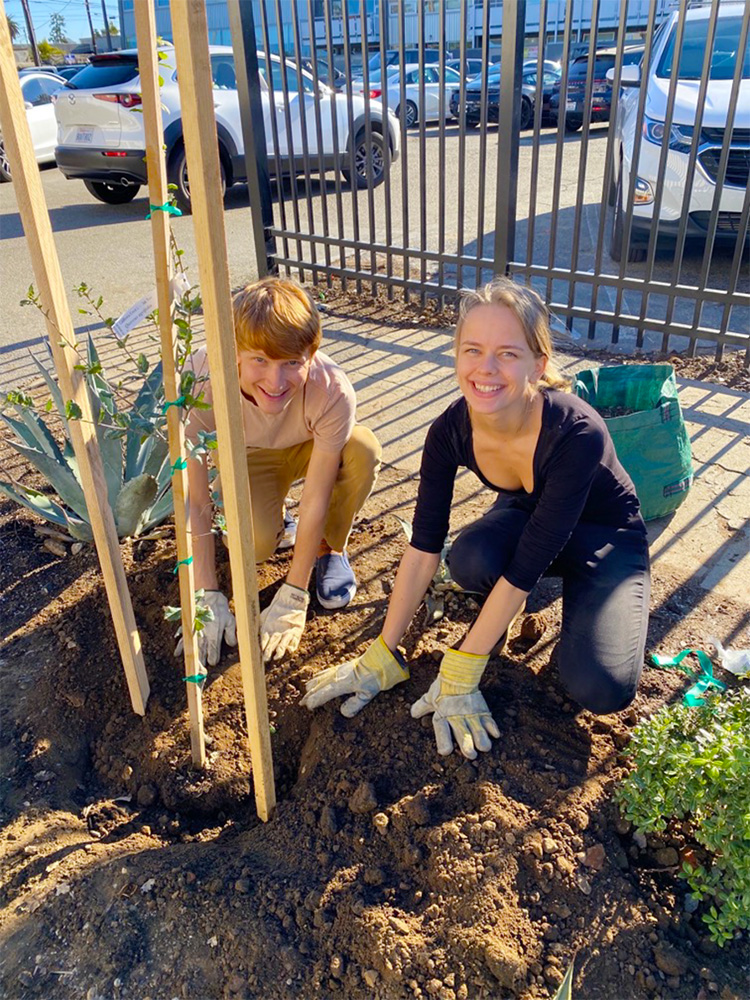
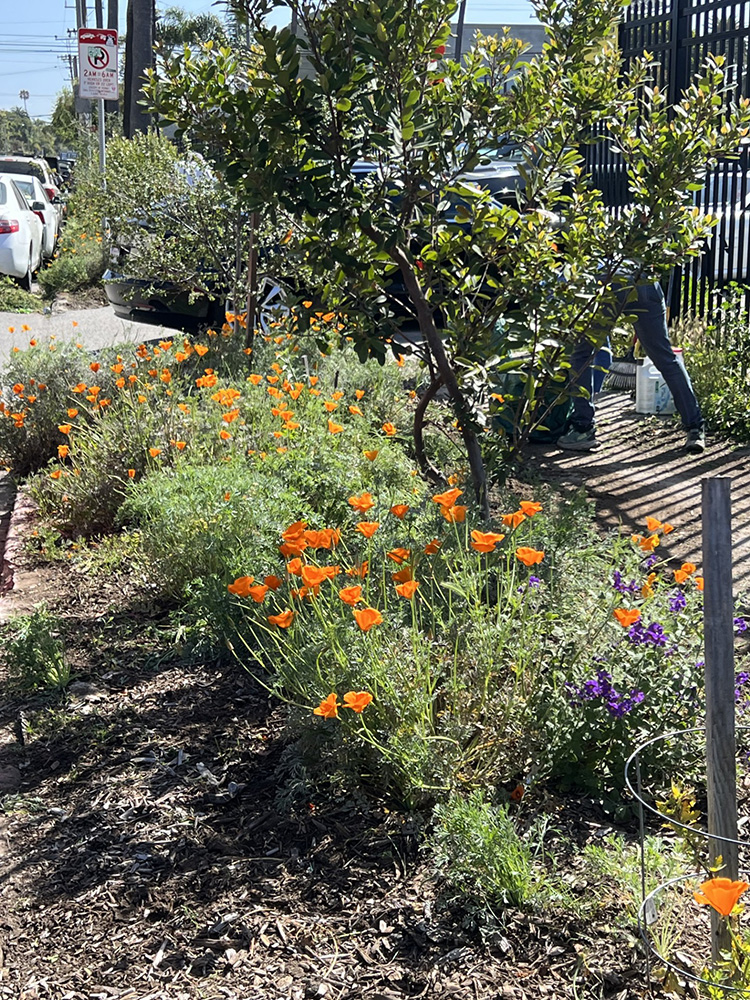

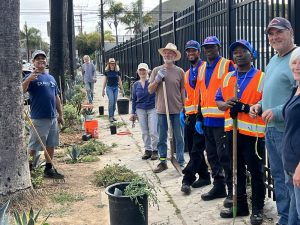



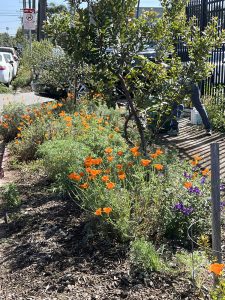

Oceanfront Walk Dune Restoration
This pilot project, located at 29th Avenue and Oceanfront Walk is still in its early stages with the blessing of LA Recreation and Parks. VVG has installed protective windbreak fencing, removed invasive grasses, and planted native poppies and coastal-friendly shrubs in an effort to replicate the success of other California dune restoration efforts.











Oakwood Park
A community hub located at 767 California Avenue, the location includes the Oakwood Recreation Center, a children’s playground, basketball court, sports fields and picnic area. Oakwood Park is a popular gathering spot and event site for locals, and there are areas in real need of additional shade cover. In the fall of 2024, using funds from a recently awarded Venice Neighborhood Council grant, VVG plans to add to our previously installed native California sycamores. These trees are a protected species and we will plant 7 more on site to replace those that have been lost in the 50-plus years since the original trees were planted at the site.

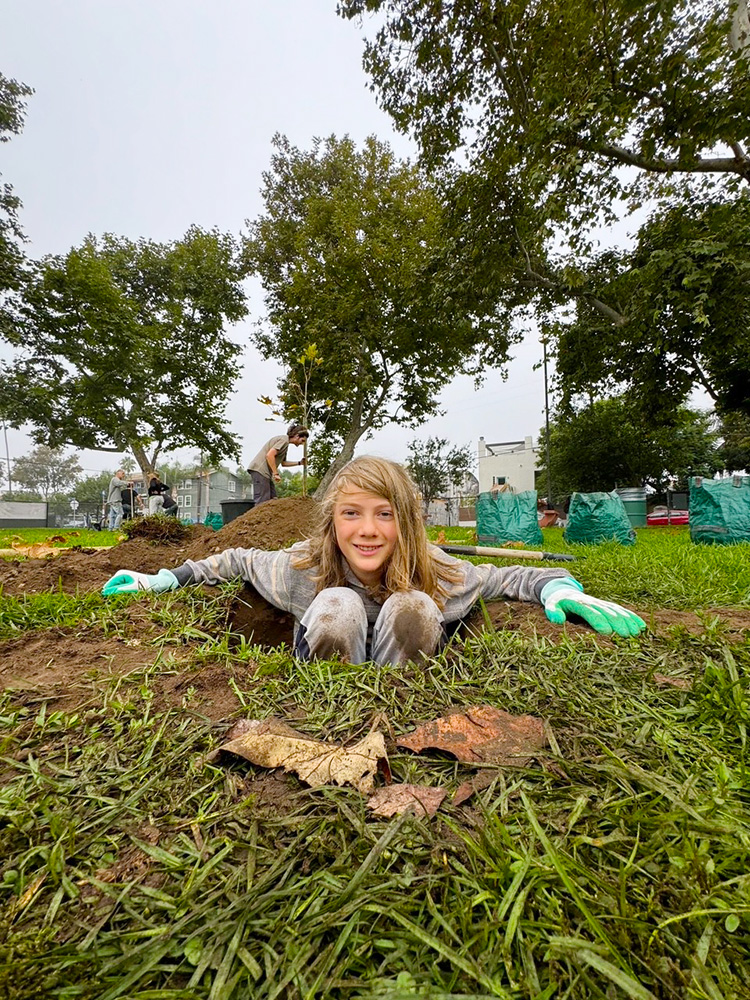
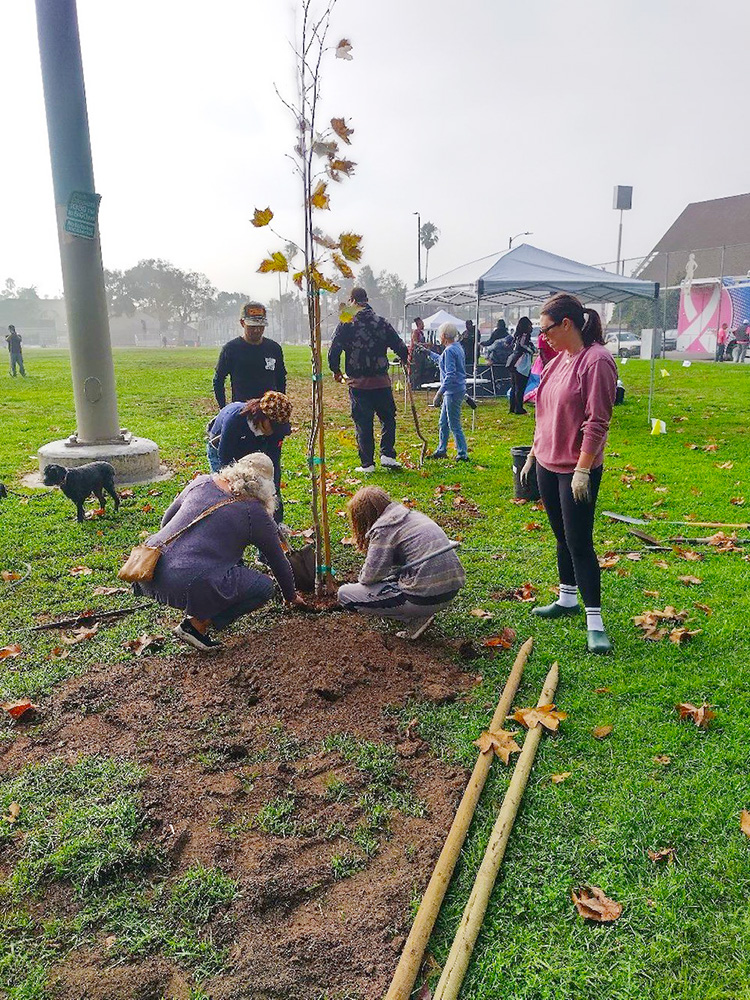



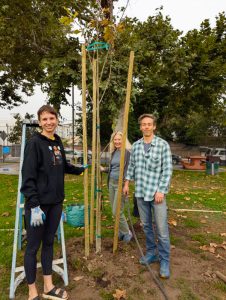








Street Trees
Verdant Venice Group (VVG) ‘s primary goal is to plant street trees to add drought-tolerant and native canopy coverage in public spaces and in the low-income parts of our neighborhood in Venice. We incorporate education of and stewardship by our neighbors around smart watering and planting practices, alternatives to lawns, and the value of native trees and under-story plants to biodiversity. Some streets we have planted on include: Appleton, Indiana, Vernon, Flower, Sunset, Broadway, Rose, 4th, 5th, 6th Ave, and Commonwealth.
Canopy Equity
Working in partnership with PK Management, a low-income housing manager with 15 buildings in Venice, VVG plants and cares for shade trees around these un-air-conditioned buildings. To date we have planted hundreds of drought tolerant canopy trees around the buildings. By strategically planting trees, the building owners have reduced their watering requirements, while beautifying the buildings.




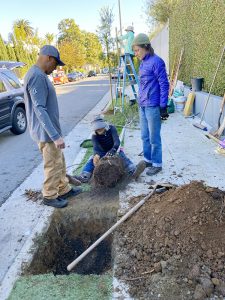








Mar Vista Gardens
VVG mentors the residents at a low-income project of 62 buildings in Del Rey on tree care techniques and smart watering practices. VVG was invited by the leadership to support their efforts to nurture the native trees planted 15 years ago. As the irrigation is turned off, teaching the residents how to responsibly water their trees prevents tree die-off which further exacerbates the heat island effect. VVG works along-side the residents to educate them in how to care for their canopy trees and recruit their own volunteers.









Farmers Market Site
Farmers Market Site
VVG plants, waters and mulches native oaks and understory plants at the Los Angeles Department of Transportation (LADOT) lot at the Venice Farmers Market site and along Venice Blvd. Designed and planted by the Bureau of Engineering in the 80’s, most of the under-story plants had since died and left behind a denuded, dusty site. We replaced the ground-cover with drought-tolerant natives beautifying the area, attracting pollinators and significantly reducing runoff.

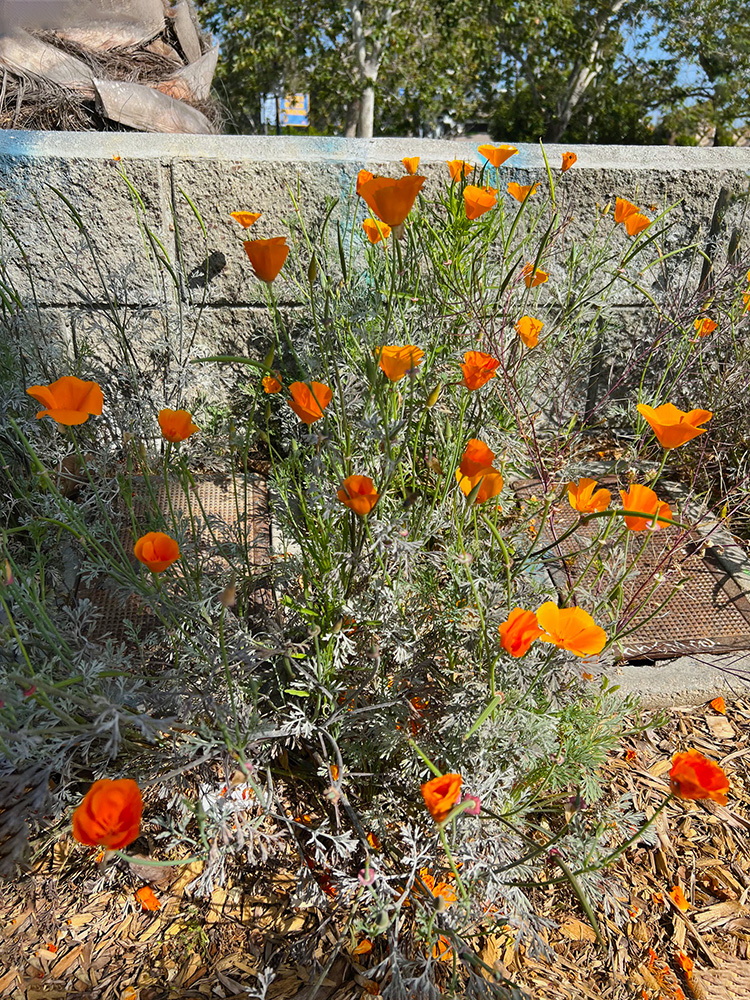






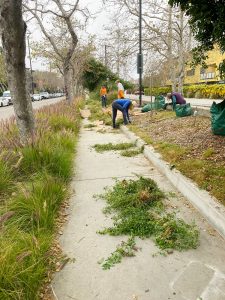




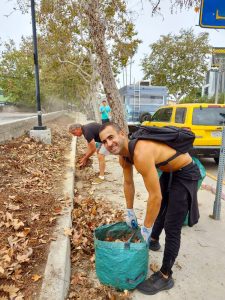





Venice Blvd Trees Rescue and Median Oak Trees
Venice Blvd Tree Rescue
Concrete removal to allow water filtration around street trees – 100’s of trees along Venice Blvd were planted with concrete collars around them. Over time, the collars were strangling the trees, and though once permeable, no longer allowed the rain to penetrate the tree wells. VVG removed the collars and partnered with the Urban Forestry Division to haul away the debris. Many tons of material was removed allowing the rain to once again penetrate the soil, watering the trees and preventing run off. The Urban Forestry Division uses VVG as a model of Public and Private Partnership.
Venice Blvd Median Oak Trees
VVG planted over a dozen young oak trees to replace some dead trees and increase the density of the tree canopy on Venice Blvd.




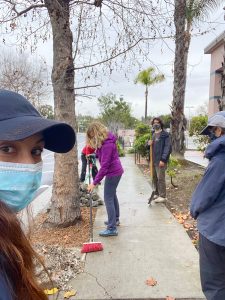
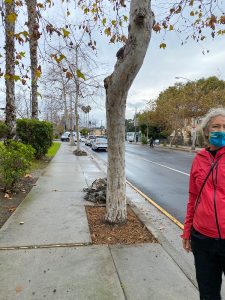

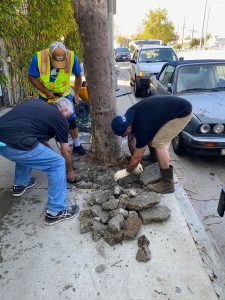










Tabor Court
Tabor Court Native Plant Garden, named after the black chauffeur and close partner/friend of Abbot Kinney, the founder of Venice of America, was planted by the Los Angeles Department of Transportation (LADOT) as a “Green Alley.” This high visibility alley, just east of Abbot Kinney Blvd, showcases coastal California native plants, especially those plants endemic to the Channel Islands, and adjacent mainland. The 5 block long area, from Venice Blvd to Santa Clara is paved with permeable concrete to allow water to infiltrate into the ground instead of run-off polluted into the ocean. Over the last 15 years, the vegetation had been neglected and the “mow and blow” method of maintenance had been inadequate. This special garden was in disrepair. Many trees had been turned into hedges, vegetation trimmed at the wrong time of year hence killing them, and ground cover was not replaced once removed. First, VVG partnered with LADOT and their maintenance crew to share information about misinformed activities hoping to stop the decline. Then, during the winter of 2024, VVG organized a community party planting day to demonstrate the importance of biodiversity, and water conservation. Over 60 volunteers helped plant over 100 understory plants and trees to rejuvenate this special garden space.
With this project, we promoted the discussion of biodiversity and water conservation, and how our behavior can impact long term climate change. We increased awareness of the value of native plants and associated water reduction. We inspired people to appreciate the natural world and the importance of our local natural resources and promoted the protection of our watershed. Once informed, we can take bold action and make a difference.


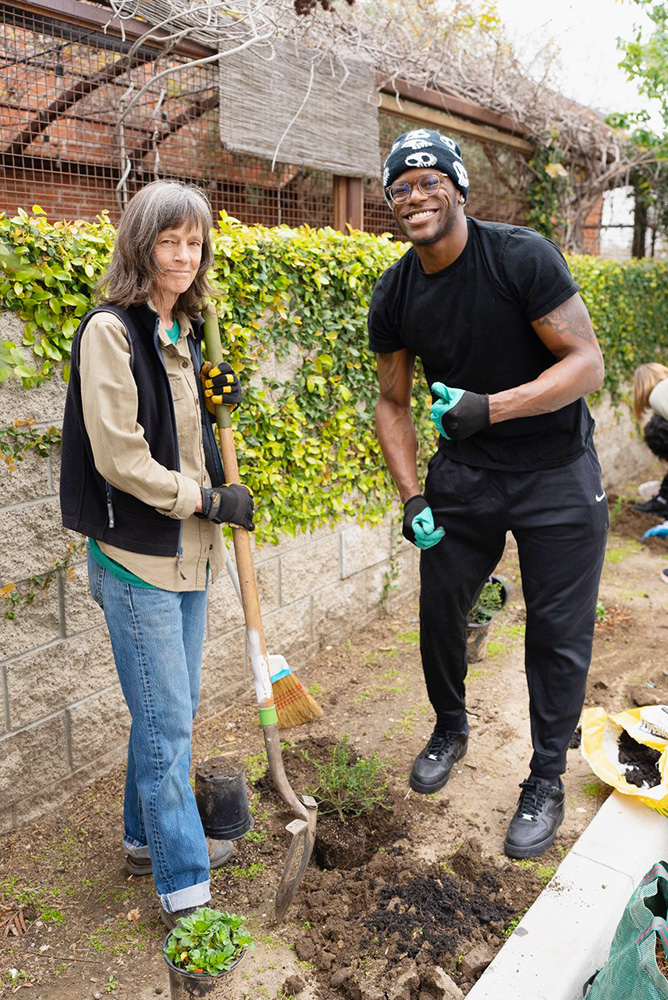


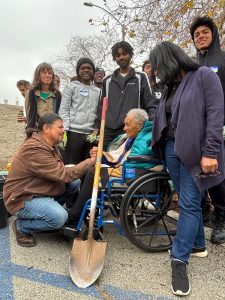





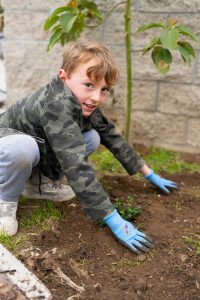
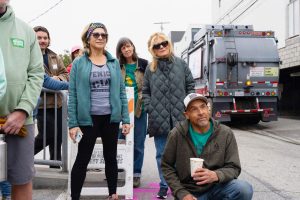

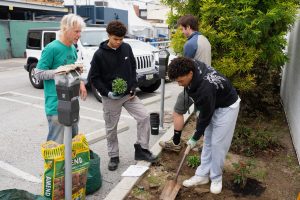



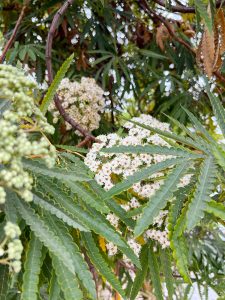
Venice PARC – Pollinator and Resilience Corridor
Along with planting trees, Verdant Venice Group has planted understory plants to create urban pollinator gardens. Now VVG, in partnership with the Venice Business Improvement District (BID), the Venice Chamber of Commerce and Council District 11 is creating a 1 mile long, 4 block wide corridor in Venice that connects the Pacific Ocean to Penmar Park and Penmar Golf Course. The overall goal of the project is to create opportunities in one of the most dense sections of Venice for nature-based solutions to our polluted storm water, impermeable surfaces, lack of native plant habitat while strengthening community understanding of/participation in/access to shade and green space. Partnering with CD11, Venice BID and the Venice Chamber is expanding our capacity to fulfill our mission.
What is an urban pollinator corridor?
A pollinator corridor, like Venice PARC, delivers a biodiverse network of habitat and nourishment for California native butterflies, birds and other pollinators. As fragmented patches are connected with native trees and flowers, they become “stepping stones” that intersect with parks and gardens. Together they form a lively and resilient network for native birds and butterflies.
Because many pollinators can fly, even a window box helps to bridge gaps and create miles of habitat!
Along with beautifying Venice, our PARC delivers many other important benefits like:
- Nourishing beneficial pollinators
- Shading streets to mitigate heat
- Filtering stormwater drainage
- Promoting urban resilience
- Increasing essential biodiversity
- Building community enjoyment
- Enhancing visitors’ experience
- Lowering water consumption
















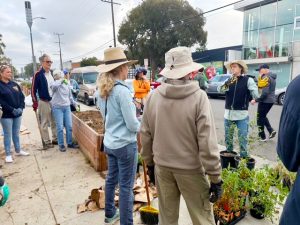



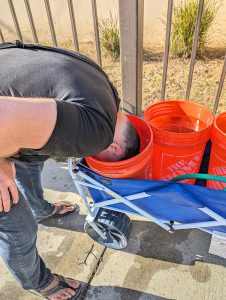



Tree Walks
VVG organizes quarterly neighborhood tree walks to remind and educate people about the wonder and value of our natural areas and to promote better tree care and gardening practices, such as use of drought tolerant trees and plants and ways to attract beneficial insects. We educate about how to water and care for trees during droughts and how to transition away from lawns.

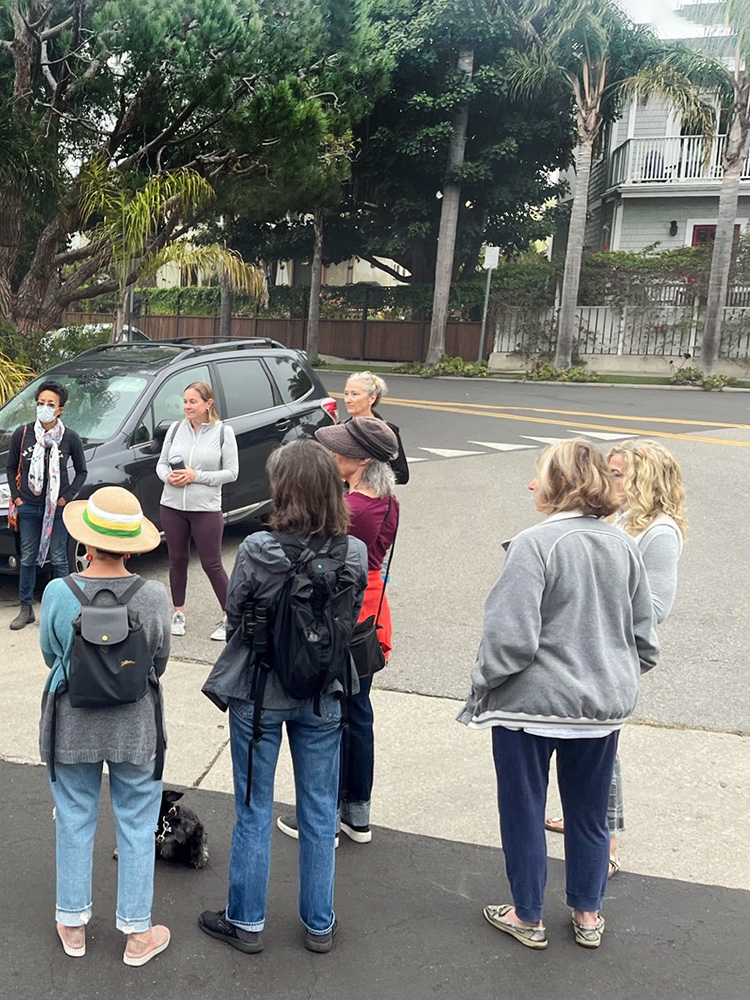


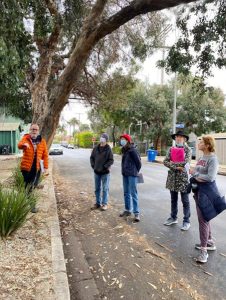




















Penmar Golf Course Oak Woodland
The Penmar Golf Course project, Tees for Trees – In collaboration with the Penmar Golf Club, Penmar Ladies Club, and Recreation and Park-Golf Division, VVG planted 32 trees to create an Oak woodland in the Northeast corner of the Penmar golf course, featuring three different varieties of Oaks: Coast Live Oak, Valley Oak and Engelmann Oak.








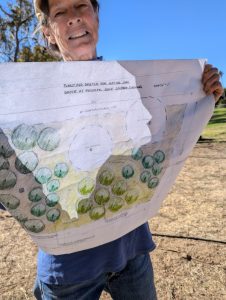









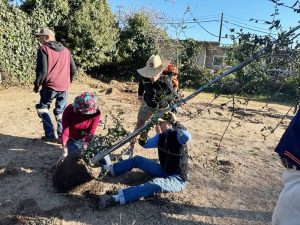






Westminster Elementary School and
Ecole Claire Fontaine Preschool
WES – VVG planted trees and de-staked mature trees.
ECF – In collaboration with Duvivier Architects and in honor of Joelle Dumas, VVG supported the young trees that replaced the asphalt.

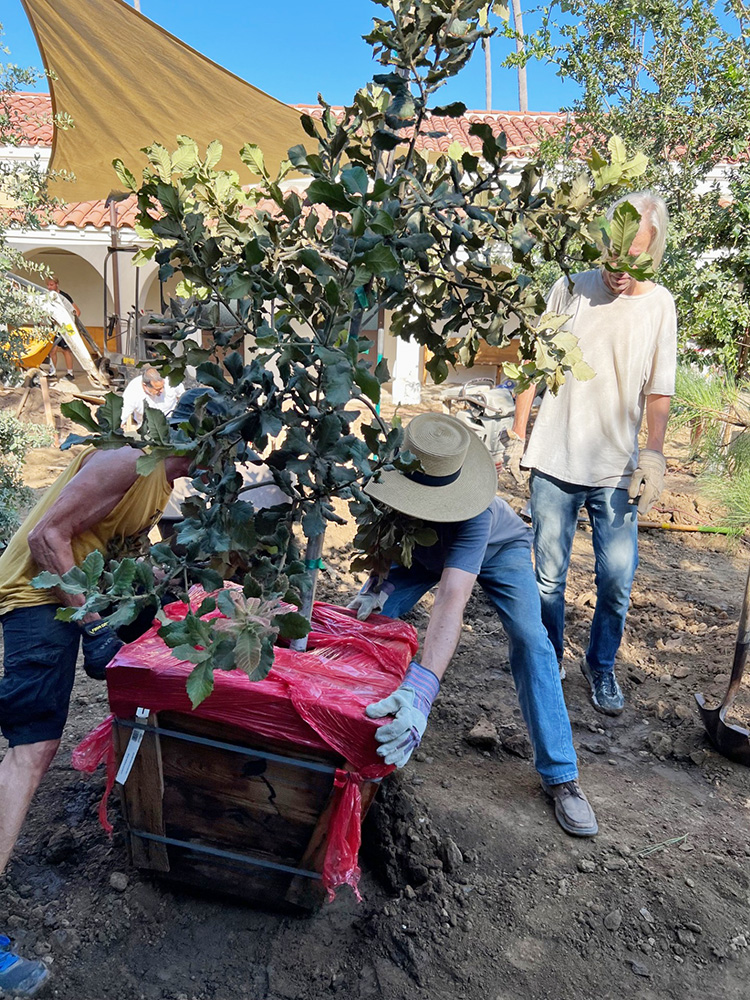


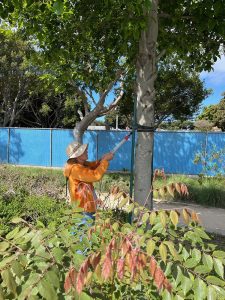













For the Love of Trees – VVG on the Art Crawl Event




